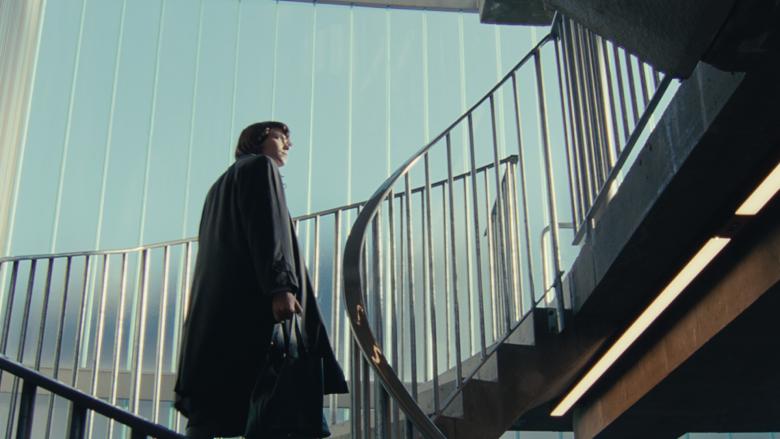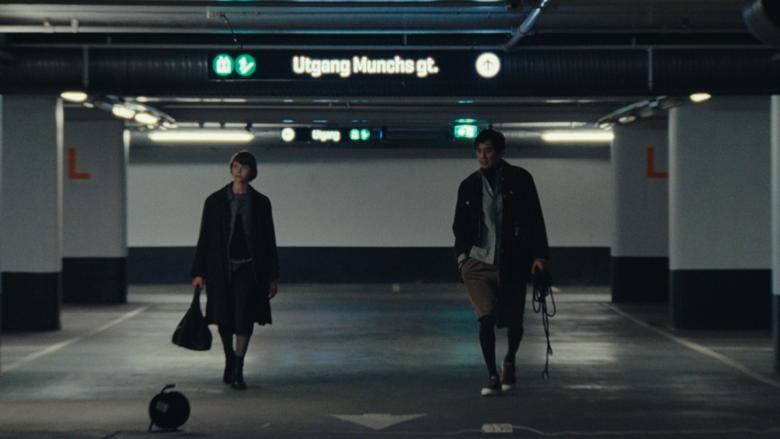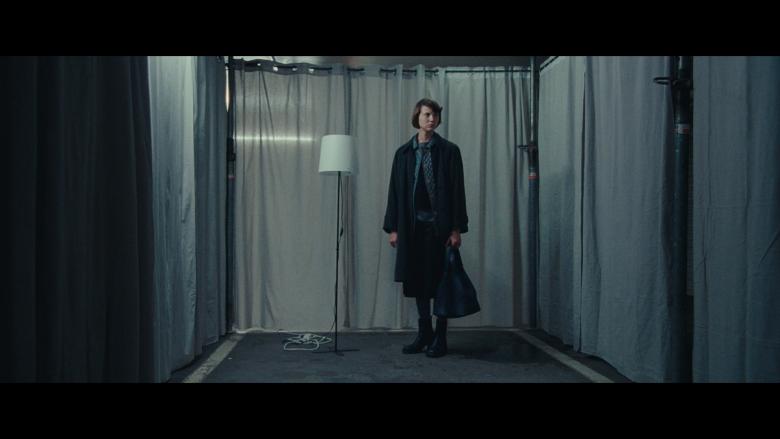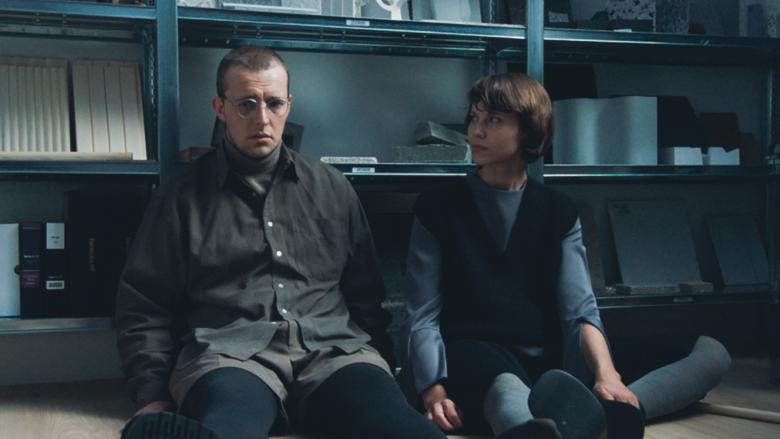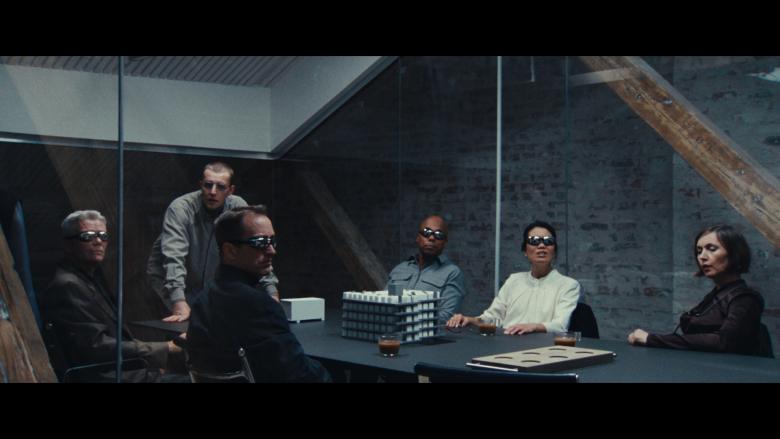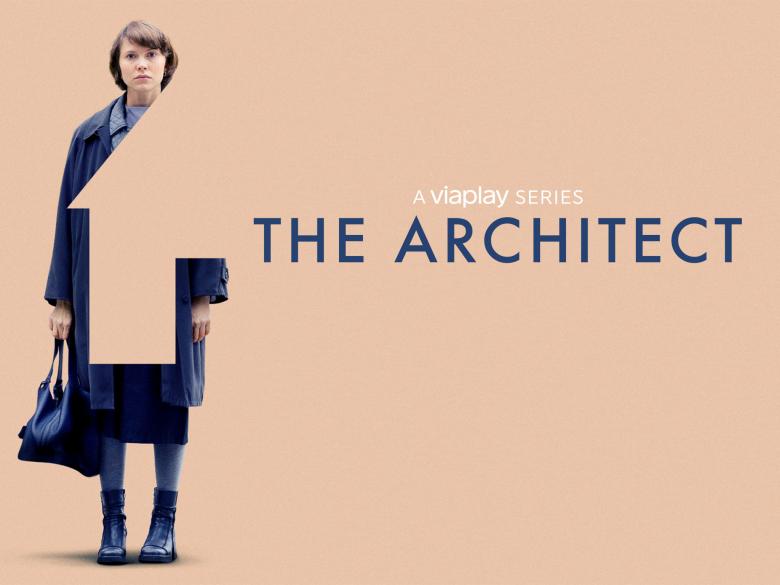‘The Architect’ – A Norwegian Dystopia
Ana María Álvarez
7. February 2024
Still from The Architect (Image courtesy of Viaplay)
Arkitekten (The Architect), winner of a special mention at the 2023 Berlinale Series Award, is a dystopian work about a female architect who is forced to live in an underground parking garage due to rising housing prices. Spanish-Architects spoke with the series creators, Nora Landsrød and Kristian Kilde.
In 2023, The Architect became a must-see series for many architecture professionals in Spain. The show immerses viewers in an Oslo of the future, where architecture and technology intertwine in a fascinating mix. The protagonist, a brave architect, ends up living in an unusual subterranean shelter after confronting the relentless real estate market. Moreover, in the same office where she seeks her success, she crosses paths with her ex-boyfriend, now a star architect in the making.
We chatted with the show’s creators, Nora Landsrød and Kristian Kilde, about the real challenges facing architects and young people, from housing shortages to unexpected opportunities. We also explored, beyond the series itself, the deep layers of today's society and the housing market.
Thank you for thinking we know about it. I think we got to read enough to feel like we entered the profession the way we wanted to. I'm glad to hear that the architects have embraced the story and identify with some of the issues we outline.
It really comes down to a vested interest for both of us: to understand how the city develops and how there are myriad moving parts in that system that makes the city what it is. Architects are, of course, a central part of this process. It is very interesting to see the duality of those in this profession when they seek to mean something or have something to say in that process and, at the same time, carry out work with commercial interests. Any work is subject to this, to people with money, to commercial interests.
We also have friends who are architecture students. We looked at little things that they have in common with each other, like the way they make coffee or the way they dress. We created the character from an observational point of view, so we were surprised that architects identified so much.
Still from The Architect (Image courtesy of Viaplay)
In the profession we experience sexism and economic, social and cultural discrimination. On the one hand, we want to create the most beautiful and best things for the world, yet at the same time we just want to have a suitable place to live. These are not issues that are unique to the architecture profession.It's quite similar to what we feel as writers because, you have this vision of how what you wrote is going to come out, but then you hand it over to someone else who will produce it. We imagine that an architect designs but, on the way to making that project a reality, materials, builders, techniques … the squeeze between commercial interest and artistic expression, it’s a subject that we felt we could relate to.
In writing, we are also making plans for a film. We seek to conceptualize a reality in order to, at the most unrealistic extreme, change the world. But then that idea is limited by various parts of the process that make it, of course, commercially realistic and viable in a business sense, but sometimes a lot of the humanity is lost.
Still from The Architect (Image courtesy of Viaplay)
The housing problem, in the real estate market, is a global one. In Barcelona, of course, it's a big problem. Have you done research on it? Is it a personal experience as well?Definitely. The idea of a home in a parking garage was ours [Nora's]. I was in search of a place to live — buy or rent — and as I was looking, I realized that the only thing I could afford was a parking space!
It's a frustration of young people and it's global. We are at a strange stage in our global economy, with lots of social media movements in Norway about miserable housing. We know personally how hard it is to be a young person trying to have a good place to live in a big city.
We found student dormitory projects with artificial sunlight being developed in the United States, and saw that large Norwegian developers were thinking of copying the idea. We were unpleasantly surprised and found it to be a dystopian reality that is actually already underway.
Today, it is very difficult to be positive and optimistic about the housing market and, in general, the entire economy. In Norway, it is definitely simply that not enough housing is being built and society is not meeting the needs of citizens, especially young people. The frustration of not knowing if you have a place to live and not having any kind of perspective where I think I will be able to have it, or that it won't have mold or a shower in the kitchen. Despair and negativity can ooze into your whole outlook on life, so it's important to give young people some hope or some optimism about the future they can actually have.
In Norway, it is only feasible to buy housing with the help of parents. It has become a class distinction, between those who can afford to buy and those who cannot.
That's just the predicament young people find themselves in today: Do you want to save the world or do you want to save yourself? Because being an idealist in this kind of market economy is often very expensive and you take on the cost of living a privileged life when you throw your ideals away.
Still from The Architect (Image courtesy of Viaplay)
In a word, what would be the main theme of the series?In our writing process, one phrase guided our creative decisions: Friendship is the most important capital. It really is as simple as it sounds. It is where our main character makes choices from. Do you want to save yourself or go down with the boat with your parents? Do you want to be alone in an apartment or together in a parking lot?
In that sense, you could say that our society has become individualized: It is each person's responsibility to grow as a person, to earn assets, to have an apartment, to have a car, to have a partner and children... It's a part of natural growth, but the pressure is always there. The market is not providing the opportunities to really achieve those things.
So there has been talk of pessimism among our generation, something to be taken very seriously. The pressure is increasing, but the opportunity to make your life acceptable in society is becoming more and more difficult. In Norway, there is pressure on young people to buy an apartment as soon as possible, with the idea that it is very beneficial for their personal finances, a great investment and a safe investment. At 20 years old, you should buy a house; you are a failure if you are still renting at 40 years old.
Home ownership is a tradition in Norway. So it is a social difference between people who rent and people who have one, two, three houses and have invested heavily in this market. Any political movement means entering the housing market prices which, on the other hand, affects others who will lose money on their investments. If new solutions or new systems do not appear, we will continue with the same effects. We agree a house should not be an asset, it is actually a roof over your head, it is a shelter, it is a human right, and it should not be subject to what happens in the market.
Still from The Architect (Image courtesy of Viaplay)
So now, what's next?We are working on a movie, but the film and television industry is a tough market, so we'll see what happens. We are still working together on new projects and trying to make something happen.
Yes, for now. We are not currently working on any more material about the housing market. But it's important to mention that we didn't expect this satire, this point of view, to resonate so widely.
The fact that it actually did is very inspiring. If we have the opportunity to do something in that space and get the same freedom that the production company gave us on this project, we will certainly try to do it.
Image courtesy of Viaplay
The Architect is available to stream from Viaplay and/or its local partners.
This interview was first published as “The Architect: una distopía noruega” on Spanish-Architects. English translation edited by John Hill.
